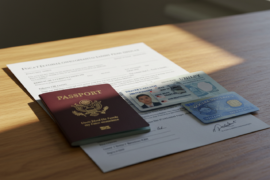This article may contain references to products or services from one or more of our advertisers or partners. We may receive compensation when you click on links to those products or services. Nonetheless, our opinions are our own.
When managing your family’s finances, a budget meeting might not top the list of activities you’re eager to tackle. However, it can be a powerful tool for fostering dialogue, setting shared goals, and ensuring everyone is on the same page regarding money matters. You might be surprised to learn that your next family budget meeting can be productive and enjoyable with a bit of creativity and some thoughtful planning.
We’ll walk you through nine easy steps to transform your budget discussions into a collaborative and engaging experience. Whether you’re a budgeting newbie or just looking to revamp your current approach, these tips will help create an atmosphere where every family member feels valued and involved in the financial journey ahead.
- Create a Comfortable and Inviting Atmosphere for Your Budget Meeting
- Set Clear Goals to Keep Everyone Focused
- Choose the Right Tools and Resources to Stay Organized
- Encourage Open Communication and Constructive Feedback
- Celebrate Progress and Set New Challenges Together
- Make Budgeting a Family Tradition for Long-Term Success
- Final Thoughts
- Frequently Asked Questions
- Recommended Reads
Create a Comfortable and Inviting Atmosphere for Your Budget Meeting
When preparing for your family budget meeting, it’s essential to create a space that feels inviting and comfortable for everyone involved. Choose a cozy location—your living room or the kitchen—where family members can sit together without distractions. Soft lighting, such as lamps or candles, can warm and relax the surroundings, encouraging open communication.
Consider complementing the atmosphere with snacks and drinks to energize and engage everyone. You might set out a platter of fruits, nuts, or your family’s favorite treats. Having some refreshments helps ease tension and fosters a more collaborative spirit.
Here are a few suggestions to enhance the environment further:
- Comfortable seating: Ensure everyone has a comfy spot to sit.
- Background music: Play soft, instrumental tunes to set a relaxed tone.
- Visual aids: Use charts or colorful budgets around the room to focus discussions.
A well-prepared space promotes a positive atmosphere and encourages productive and open financial conversations. By focusing on comfort and accessibility, you’ll help everyone feel more at ease discussing often-sensitive topics, making it easier to work toward your financial goals together.
Set Clear Goals to Keep Everyone Focused
To ensure your family budget meeting runs smoothly and effectively, start by establishing specific objectives. Identify what you want to achieve during the meeting, and communicate these goals clearly to everyone involved. Consider the various aspects of your family’s finances that need attention, such as:
- Current expenses: Review monthly spending to find areas to cut back.
- Saving strategies: Determine how much you want to save for short-term and long-term goals.
- Debt repayment: Discuss strategies for paying down any existing debt.
Using a simple table can help visualize these goals and keep everyone accountable:
| Goal | Target Amount | Deadline |
|---|---|---|
| Emergency Fund | $5,000 | Dec 2024 |
| Family Vacation | $2,000 | July 2025 |
| Debt Reduction | $1,000 | Year-end 2025 |
By clearly defining these targets, you keep everyone focused and encourage a collaborative atmosphere where each family member feels invested in the process. As goals are achieved, celebrate those wins together to maintain motivation and strengthen your family’s financial commitment.
Choose the Right Tools and Resources to Stay Organized
To make the most of your family budget meeting, it’s essential to utilize tools and resources that keep everyone on the same page. Consider using digital and physical tools that suit your family’s style. Here are some recommended tools:
- Budgeting apps: Tools like Mint or YNAB (You Need A Budget) can help visualize your financial situation and track spending in real time.
- Spreadsheets: A simple Google Sheet or Excel document can be customized to collaboratively track income, expenses, and savings goals.
- Whiteboard or flip chart: A physical space for notes during the meeting can encourage interaction and ensure everyone feels involved.
- Financial education resources: Websites like Khan Academy or financial podcasts can provide insights and tips that lead to more informed discussions.
Setting up a shared calendar for your budgeting meetings may also be helpful, reminding everyone when it’s time to gather and discuss your financial future. Here’s an example agenda:
| Agenda Item | Time Allotted |
|---|---|
| Review Last Month’s Budget | 15 Minutes |
| Discuss Upcoming Expenses | 20 Minutes |
| Set Goals for Next Month | 10 Minutes |
| Open Floor for Ideas | 15 Minutes |
The right tools enhance organization and foster collaboration during family budget meetings. Equip yourself with these resources to promote accountability and clarity, leading to more productive financial discussions.
Encourage Open Communication and Constructive Feedback
Creating a space where everyone feels comfortable sharing their thoughts is essential for a fruitful discussion about family budgeting. Encourage each family member to voice their opinions and concerns by actively listening without judgment. This respects their perspectives and fosters an environment where everyone invests in the conversation.
Make it clear that all ideas are welcome, whether about cutting expenses or finding new ways to save. You might even want to start the meeting by sharing your thoughts first. This can set a positive tone and inspire others to open up.
To facilitate constructive feedback, consider using a simple framework that allows everyone to express what they like and what could be improved. A table format works well:
| What Works Well | Suggestions for Improvement |
|---|---|
| Sticking to the grocery budget | Explore bulk buying options |
| Saving plans for emergencies | Review savings goals quarterly |
| Involvement in spending choices | Assign roles or responsibilities |
Focus on solutions rather than dwelling on problems. Remember that the ultimate goal is to work together toward financial stability and success.
Celebrate Progress and Set New Challenges Together
As you wrap up your family budget meeting, take a moment to reflect on the progress you’ve made together. Celebrate the small victories, whether paying off a debt or saving for a family vacation. Acknowledging these achievements fosters a sense of unity and motivation.
Now it’s time to look ahead. Setting new challenges as a family strengthens bonds and promotes healthy financial habits. Consider goals like:
- Increasing savings for an emergency fund
- Reducing monthly expenses by cutting unneeded subscriptions
- Creating a fun savings challenge to encourage participation
- Planning a family trip and budgeting for it together
Use a table to keep track of these goals:
| Challenge | Target Completion Date | Responsible Family Member |
|---|---|---|
| Increase Emergency Fund | 3 Months | Mom |
| Reduce Monthly Expenses | 1 Month | Dad |
| Family Savings Challenge | 6 Months | All |
By setting new challenges together, you build a stronger financial foundation and create memorable moments of teamwork. Revisit these goals in future meetings to nurture progress and celebrate each step.
Make Budgeting a Family Tradition for Long-Term Success
Establishing a family budgeting routine strengthens financial stability and cultivates a spirit of teamwork and accountability. Treat budgeting as a family tradition so everyone has a stake in your household’s economic health.
Here are a few key practices:
- Set a regular schedule: Choose a consistent monthly day for your budget meetings.
- Involve everyone: Encourage participation from all family members—kids can learn money basics, while adults share insights and strategies.
- Celebrate successes: Acknowledge progress such as paying off debt or reaching a savings milestone.
You can also create a table to track budget performance:
| Category | Budget Amount | Actual Amount | Difference |
|---|---|---|---|
| Groceries | $500 | $450 | $50 |
| Utilities | $200 | $220 | -$20 |
| Entertainment | $150 | $100 | $50 |
Using these techniques can improve your financial literacy and instill a sense of collective responsibility. Making budgeting a family affair can lead to lasting financial success.
Final Thoughts
A family budget meeting doesn’t have to be a dreaded chore. The right approach can become a cornerstone of your family’s financial well-being—something everyone looks forward to. By creating a welcoming atmosphere, setting clear goals, using helpful tools, and encouraging open communication, you’re not just balancing numbers—you’re building trust, teamwork, and long-term success.
When everyone feels heard and involved, budgeting becomes less about restrictions and more about possibilities. Whether you’re saving for a vacation, paying off debt, or planning your next big goal, these meetings can remind you that you’re all in it together.
So grab some snacks, cue the playlist, and start your new family tradition that brings you closer with every dollar discussed.
Frequently Asked Questions
Why is having a family budget meeting vital?
It helps everyone understand the family’s financial situation, encourages open communication, and involves all family members in decision-making.
How can we make the budget meeting fun for everyone?
Try incorporating games like “budget bingo,” offer small rewards for participation, or bring snacks to keep things relaxed.
Who should be involved in the budget meeting?
Everyone! Adults can share insights, and kids can learn valuable financial habits early on.
Who should be involved in the budget meeting?
Everyone! Adults can share insights, and kids can learn valuable financial habits early on.
What should we prepare before the meeting?
Gather documents like bank statements, bills, and income reports. Drafting a preliminary budget or agenda helps keep the meeting focused.

Reviewed and edited by Albert Fang.
See a typo or want to suggest an edit/revision to the content? Use the comment form below for feedback.
At FangWallet, we value editorial integrity and open collaboration in curating quality content for readers to enjoy. Much appreciated for the assist.
Did you like our article and find it insightful? We encourage sharing the article link with family and friends to benefit as well - better yet, sharing on social media. Thank you for the support! 🍉
Article Title: How to Make Your Family Budget Meeting Collaborative and Enjoyable
https://fangwallet.com/2025/04/14/make-your-family-budget-meeting-collaborative/The FangWallet Promise
FangWallet is an editorially independent resource - founded on breaking down challenging financial concepts for anyone to understand since 2014. While we adhere to editorial integrity, note that this post may contain references to products from our partners.
The FangWallet promise is always to have your best interest in mind and be transparent and honest about the financial picture.
Become an Insider
Editorial Disclaimer: The editorial content on this page is not provided by any of the companies mentioned. The opinions expressed here are the author's alone.
The content of this website is for informational purposes only and does not represent investment advice, or an offer or solicitation to buy or sell any security, investment, or product. Investors are encouraged to do their own due diligence, and, if necessary, consult professional advising before making any investment decisions. Investing involves a high degree of risk, and financial losses may occur including the potential loss of principal.
Source Citation References:
+ Inspo
There are no additional citations or references to note for this article at this time.











































